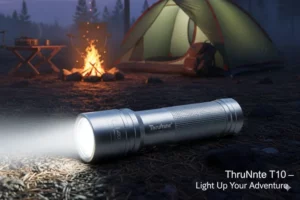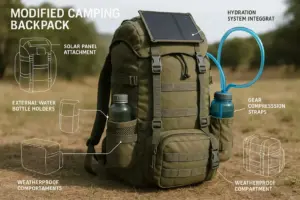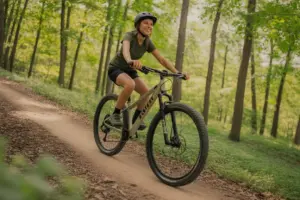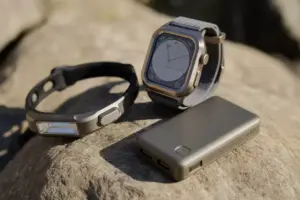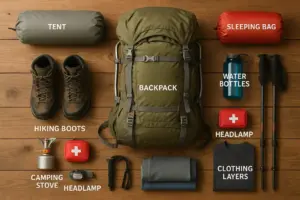Backpacking for Beginners: How to Feel Confident on Your First Multi-Day Hike
Picture this: You’re standing at a trailhead, backpack loaded, heart racing with excitement and nerves. The wilderness stretches ahead, promising adventure, but also uncertainty. For many aspiring backpackers, that first multi-day hike feels like stepping into the unknown. The good news? With proper preparation and the right mindset, anyone can transform from a nervous beginner into a confident trail explorer.
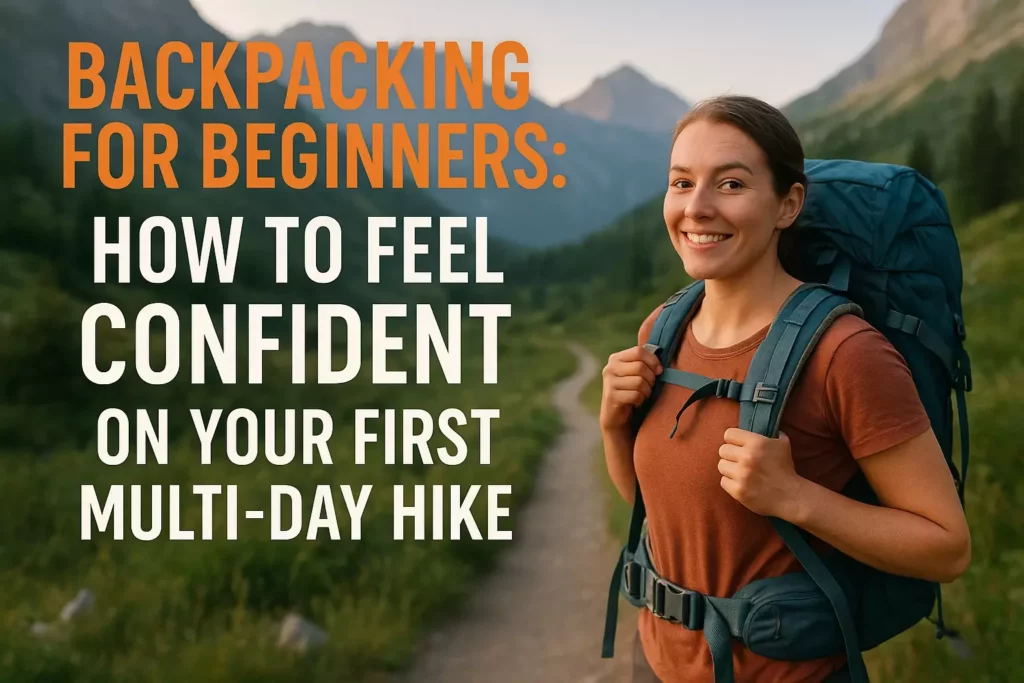
Backpacking opens doors to some of the most spectacular and remote places on Earth. Unlike day hiking, multi-day adventures allow you to venture deeper into wilderness areas, witness stunning sunrises from mountain peaks, and experience the profound peace that comes from disconnecting from modern life. However, the transition from day hikes to overnight expeditions requires new skills, gear, and mental preparation.
Key Takeaways
- Start small and build gradually – Begin with overnight trips before attempting longer expeditions
- Master the “Big Four” gear categories – Focus on getting the right backpack, shelter, sleep system, and cooking setup
- Practice essential skills at home – Set up your tent, use your stove, and pack your backpack before hitting the trail
- Plan thoroughly but stay flexible – Research your route, check weather conditions, and have backup plans
- Safety comes first – Always inform someone of your plans and carry essential safety gear
Understanding the Basics: What Makes Backpacking Different
Backpacking differs significantly from day hiking in several key ways. While day hikers carry snacks and water, backpackers must transport everything needed for survival: shelter, food, cooking equipment, extra clothing, and safety gear. This self-sufficiency creates both freedom and responsibility.
Weight management becomes crucial when carrying everything on your back. Every item must justify its weight and space. Experienced backpackers often spend years refining their gear lists, constantly seeking the perfect balance between comfort, safety, and pack weight.
Route planning also becomes more complex. Backpackers must consider water sources, camping regulations, weather patterns, and emergency exit routes. Unlike day hikers who return to their car each evening, backpackers commit to spending nights in the wilderness, making careful planning essential.
Essential Gear for Your First Backpacking Trip
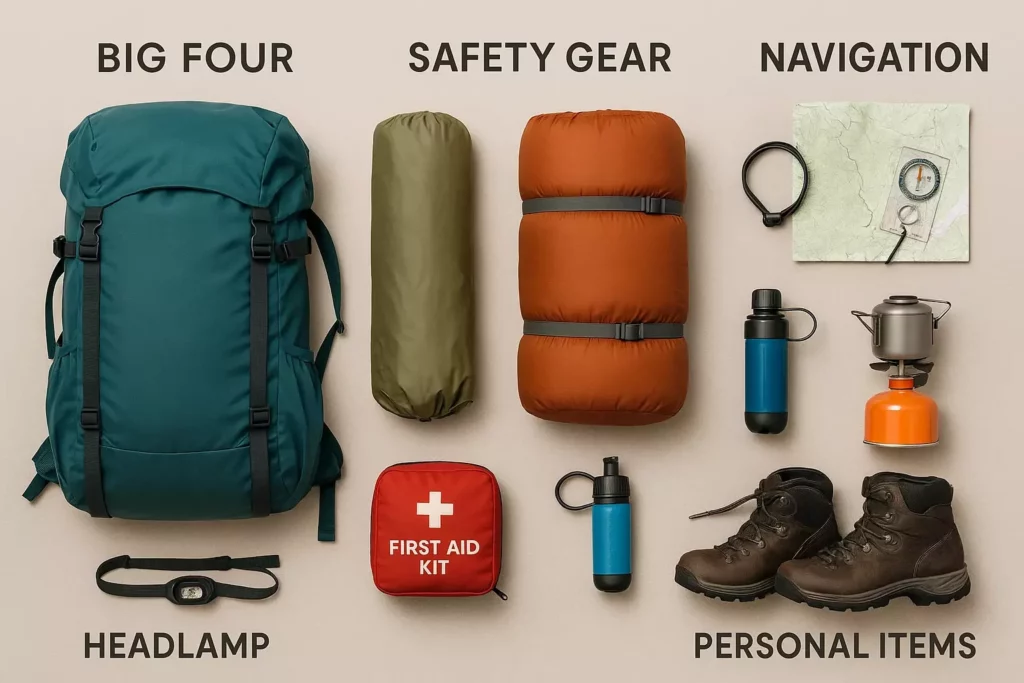
The Big Four: Core Gear Categories
Backpack Selection 🎒
Your backpack serves as your mobile home, so choosing the right one is critical. For beginners, a 50-65 liter pack typically provides adequate space without encouraging overpacking. Look for features like:
- Adjustable torso length
- Padded hip belt and shoulder straps
- Multiple access points (top and front panel)
- External attachment points for gear
Shelter Systems ⛺
Your shelter protects you from the elements and provides psychological comfort. Three main options exist:
- Tents: Offer the most protection and comfort for beginners
- Hammocks: Great for forested areas with trees
- Tarps: Ultralight but require more skill to set up effectively
For first-time backpackers, a quality three-season tent provides the best balance of protection and ease of use. Consider reading about tent setup techniques to understand the basics.
Sleep Systems 😴
A good night’s sleep is crucial for enjoying your adventure and maintaining energy. Your sleep system consists of:
- Sleeping bag: Choose based on expected temperatures
- Sleeping pad: Provides insulation and comfort
- Pillow: Can be inflatable, stuff sack, or extra clothes
When selecting a sleeping bag, consider the temperature rating, insulation type (down vs. synthetic), and weight.
Cooking Equipment 🍳
Eating well on the trail boosts morale and provides necessary energy. Basic cooking setups include:
- Lightweight stove and fuel
- Pot or cooking system
- Spork or lightweight utensils
- Water treatment method
Learn more about campfire cooking techniques to expand your trail meal options.
Additional Essential Items
Navigation Tools 🧭
- Map and compass (know how to use them)
- GPS device or smartphone with offline maps
- Route description or guidebook
Safety Equipment 🚨
Building a comprehensive first aid kit is essential for handling minor injuries and emergencies. Additional safety items include:
- Whistle for emergency signaling
- Headlamp with extra batteries
- Emergency shelter (space blanket or bivy)
- Multi-tool or knife
Clothing and Personal Items 👕
Pack clothing using the layering system:
- Base layer: Moisture-wicking materials
- Insulating layer: Fleece or down jacket
- Outer shell: Waterproof and breathable
Check out recommendations for cool weather camping clothes to stay comfortable in various conditions.
How to Get Better at Backpacking: Building Essential Skills
Hiking Skills for Beginners
Pacing and Endurance 🚶♂️
Developing proper pacing prevents exhaustion and injury. Follow these guidelines:
- Start slow and maintain a conversational pace
- Take regular breaks (10 minutes every hour)
- Listen to your body and adjust accordingly
- Build endurance gradually over multiple trips
Navigation Skills 🗺️
Basic navigation skills can prevent dangerous situations:
- Learn to read topographic maps
- Understand compass basics
- Practice triangulation techniques
- Always know your approximate location
Leave No Trace Principles 🌿
Responsible backpacking protects wilderness areas for future generations:
- Plan ahead and prepare
- Travel and camp on durable surfaces
- Dispose of waste properly
- Leave what you find
- Minimize campfire impacts
- Respect wildlife
- Be considerate of other visitors
Water and Food Management
Water Procurement and Treatment 💧
Access to clean water is vital for survival. Learn various water purification methods:
- Boiling (most reliable but fuel-intensive)
- Water filters (convenient and effective)
- Purification tablets (lightweight backup option)
- UV sterilizers (fast but require clear water)
Meal Planning and Preparation 🥘
Successful meal planning balances nutrition, weight, and taste:
- Calculate caloric needs (typically 2,500-4,500 calories per day)
- Choose lightweight, calorie-dense foods
- Plan for easy preparation and cleanup
- Include comfort foods for morale
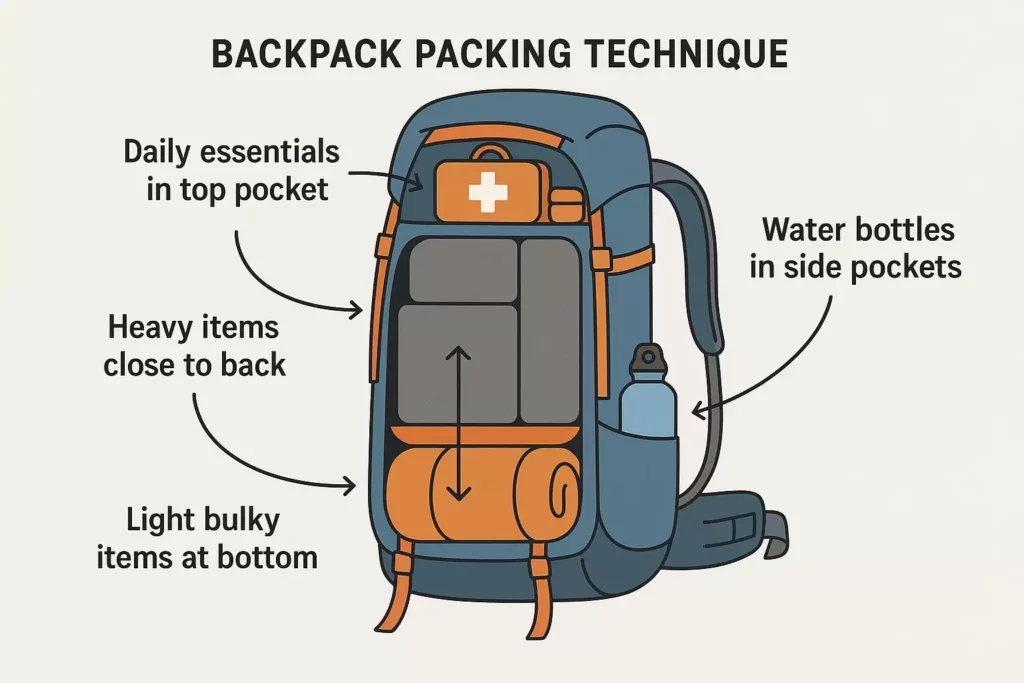
🎒 Backpacking Trip Planner & Checklist
Trip Details
Planning Your First Multi-Day Adventure
Choosing the Right Trail
Research and Route Selection 📍
Selecting an appropriate trail sets the foundation for a successful trip. Consider these factors:
- Distance and elevation gain: Start with shorter distances (8-12 miles total)
- Trail difficulty: Choose well-marked, established trails
- Water availability: Ensure reliable water sources along the route
- Camping options: Look for designated campsites or areas allowing dispersed camping
- Permit requirements: Many popular areas require advance reservations
Weather and Seasonal Considerations 🌤️
Weather significantly impacts backpacking safety and enjoyment:
- Check long-range forecasts before departure
- Understand seasonal weather patterns for your chosen area
- Plan for temperature swings (mountains can be 30-40°F cooler at night)
- Consider daylight hours when planning daily mileage
Packing Strategies and Weight Management
Efficient Packing Techniques 📦
Proper packing improves comfort and accessibility:
- Place heavy items close to your back and centered
- Keep frequently used items easily accessible
- Use compression sacks for sleeping bags and clothing
- Distribute weight evenly between left and right sides
Learn more about effective backpack packing strategies to optimize your load distribution.
Weight Reduction Tips ⚖️
Every ounce matters when carrying everything on your back:
- Choose multi-use items: Trekking poles that convert to tent poles
- Repackage items: Transfer toiletries to smaller containers
- Leave cotton at home: Choose synthetic or merino wool materials
- Evaluate necessities: Question every item’s importance
| Gear Category | Target Weight Range | Weight-Saving Tips |
|---|---|---|
| Backpack | 2-4 lbs | Choose frameless for lighter loads |
| Shelter | 2-4 lbs | Consider trekking pole tents |
| Sleep System | 3-5 lbs | Down insulation weighs less |
| Cooking | 1-2 lbs | Canister stoves are lightest |
| Total Base Weight | 15-20 lbs | Aim for under 20% body weight |
Building Confidence Through Practice
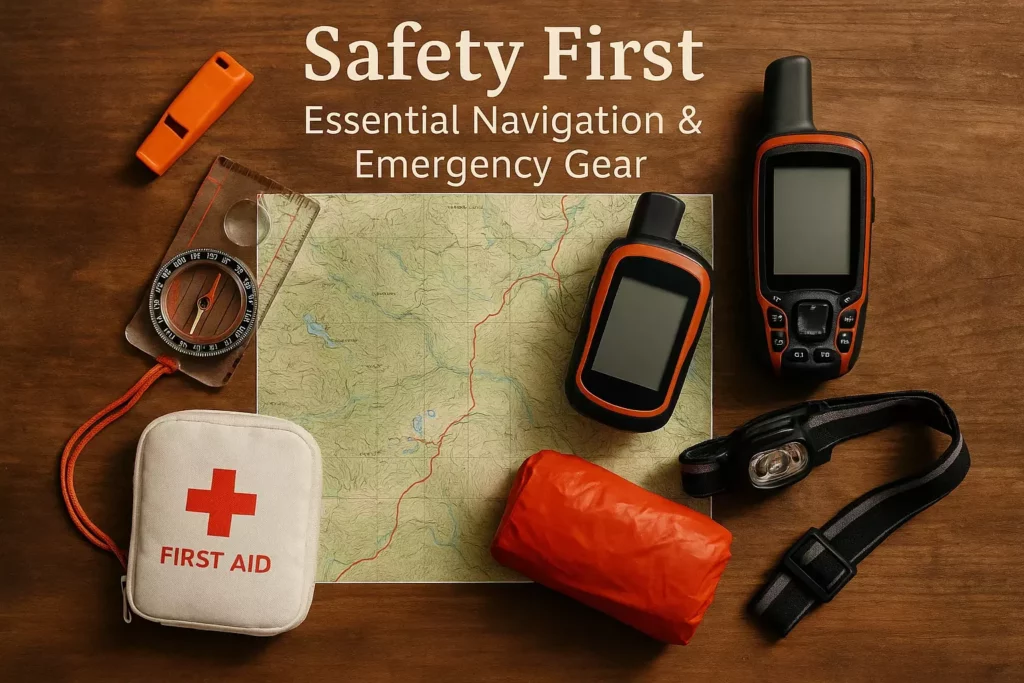
Pre-Trip Preparation
Gear Testing and Familiarity 🔧
Never use untested gear on your first backpacking trip:
- Set up your tent in the backyard multiple times
- Practice using your stove and cooking system
- Test your water filter with different water sources
- Wear your boots on several day hikes to break them in
- Sleep in your sleeping bag at home to test comfort
Physical Conditioning 💪
Backpacking demands more physical fitness than day hiking:
- Build cardiovascular endurance through regular hiking
- Strengthen core and leg muscles with targeted exercises
- Practice hiking with a weighted pack
- Gradually increase training distances and pack weight
Mental Preparation 🧠
Mental readiness is as important as physical preparation:
- Visualize potential challenges and your responses
- Study your route thoroughly using maps and guidebooks
- Read trip reports from other hikers
- Prepare for discomfort and problem-solving situations
Safety Protocols and Emergency Preparedness
Communication and Check-in Plans 📱
Always inform someone about your plans:
- Leave detailed itinerary with trusted contacts
- Establish check-in times and procedures
- Consider satellite communication devices for remote areas
- Understand when and how to call for help
Risk Management ⚠️
Identify and mitigate potential risks:
- Weather hazards: Lightning, hypothermia, heat exhaustion
- Terrain challenges: River crossings, loose rock, steep sections
- Wildlife encounters: Know proper food storage and animal behavior
- Getting lost: Carry navigation tools and know how to use them
Having a well-stocked survival kit can provide additional peace of mind and emergency preparedness.
Common Beginner Mistakes and How to Avoid Them
Overpacking and Gear Mistakes
The “What If” Trap 🤔
New backpackers often pack for every possible scenario:
- Problem: Carrying multiple backup items and “just in case” gear
- Solution: Stick to your gear list and trust your research
- Tip: If you haven’t used an item in three trips, consider leaving it home
Ignoring Fit and Comfort 😣
Poorly fitting gear causes discomfort and safety issues:
- Backpack fit: Get professionally fitted at an outdoor store
- Boot selection: Ensure proper size and break-in period
- Clothing layers: Test systems before relying on them
Planning and Execution Errors
Overambitious Distance Goals 🏃♂️
Beginners often underestimate hiking time with full packs:
- Plan conservatively: 1-2 mph with breaks and full pack
- Factor in elevation: Add 30 minutes per 1,000 feet of elevation gain
- Include setup time: Allow extra time for camp setup and breakdown
Inadequate Water Planning 💧
Water miscalculations can become dangerous quickly:
- Carry extra: Better to carry too much than too little
- Know your sources: Research water availability along your route
- Have backup purification: Carry multiple treatment methods
Advanced Tips to Accelerate Your Learning
Learning from Experience
Post-Trip Analysis 📝
After each trip, conduct an honest assessment:
- What gear worked well? What didn’t?
- Which skills need more practice?
- How accurate was your planning?
- What would you do differently?
Connecting with the Community 👥
Learning from experienced backpackers accelerates skill development:
- Join local hiking clubs or online communities
- Attend outdoor gear swaps and presentations
- Consider guided trips for skill-building
- Find mentors willing to share knowledge
For those planning to introduce others to the outdoors, consider resources about camping with kids and family-friendly activities to share your passion safely.
Seasonal Skill Development
Three-Season Progression 🍃❄️🌸
Build skills progressively through different seasons:
- Summer: Focus on basic skills with forgiving conditions
- Fall: Practice in cooler weather and shorter days
- Spring: Handle variable conditions and mud season challenges
- Winter: Advanced skills requiring specialized gear and training
Expanding Your Horizons 🌄
As confidence grows, consider new challenges:
- Different terrain types (desert, alpine, coastal)
- Longer distances and multi-week expeditions
- Off-trail navigation and route-finding
- Ultralight backpacking techniques
Technology and Modern Backpacking
Digital Tools and Apps
Navigation Technology 📱
Modern technology enhances safety without replacing traditional skills:
- Smartphone apps: Gaia GPS, AllTrails, or similar mapping applications
- GPS devices: Dedicated units for extended wilderness travel
- Satellite communicators: Two-way messaging and emergency beacons
- Weather apps: Detailed forecasts and radar information
Planning Resources 💻
Online resources streamline trip planning:
- Trail condition reports and recent trip updates
- Permit reservation systems and availability calendars
- Gear reviews and comparison websites
- Online communities for advice and trip partners
Balancing Technology and Traditional Skills
Backup Systems 🔄
Technology fails, so maintain traditional skills:
- Always carry paper maps and compass
- Know basic navigation without GPS
- Understand weather signs and natural indicators
- Practice fire-starting without matches or lighters
Conclusion
Transforming from a nervous beginner into a confident backpacker is a journey that requires patience, practice, and persistence. The key to success lies in starting small, learning continuously, and building skills progressively. Remember that every experienced backpacker was once a beginner facing the same uncertainties and challenges.
Your Next Steps:
- Start planning your first overnight trip using the principles outlined in this guide
- Test all gear at home before heading into the wilderness
- Connect with local hiking communities for support and mentorship
- Begin physical conditioning with regular day hikes carrying a weighted pack
- Study your chosen route thoroughly using maps, guidebooks, and online resources
The wilderness offers incredible rewards for those willing to step outside their comfort zones. With proper preparation, the right gear, and a commitment to learning, your first multi-day backpacking adventure will be the beginning of a lifelong passion for wilderness exploration.
Every step you take on the trail builds confidence, every challenge overcome strengthens your skills, and every night spent under the stars deepens your connection to the natural world. The journey from beginner to confident backpacker is one of the most rewarding adventures you’ll ever undertake.


